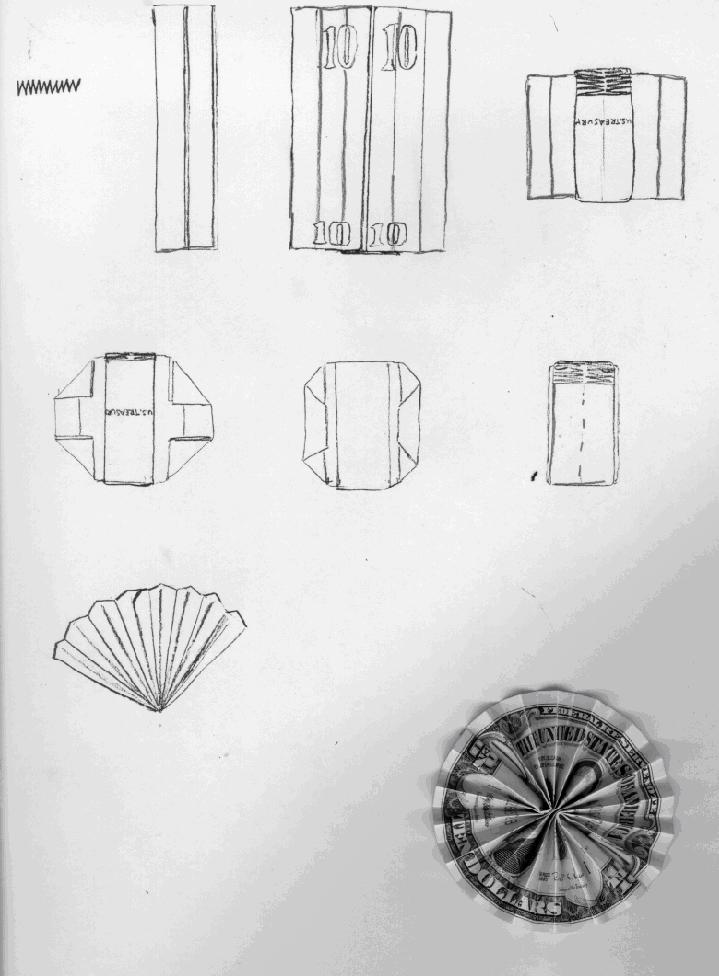
The dollar bill rosette model, originated by Paul Jackson and modified by Martin Kruskal, offers two compelling mathematical notions based on the requirement to mark off divisions of 11ths on the length of a dollar bill: one is the improvement of the estimate, and the other is a special property of the number 11. The latter is a property well known to mathematicians specializing in number theory. It offers evidence to students that there are properties other than even versus odd and prime versus composite. For the dollar bill rosette model, the property means that a certain procedure will 'hit' all the 10 intermediate points where you need a mark to divide the bill into eleven parts.
Take a dollar bill and estimate 1/11 on the long side by making a pinch. What you will be doing is using that estimate to mark off each of the ten sub-divisions and eventually return to the first one. The new mark will be an improvement on the original.
Think about what you have done and why you could do it. At each stage, you have the dollar divided into two pieces, one being an even number of parts (11ths) and one an odd number of parts. (Why is this true? Answer: eleven is an odd number so partitioning into two whole number parts always yields one even and one odd portion.) You can always divide the even portion into two pieces of the same size. Keep going until you return to the starting configuration.
What is true of 11 and certain other numbers is that this procedure goes through each of the numbers 1 to 10 before getting back to 10 again. It may be more fitting to say that it goes through the sequence (10,1) (5,6) (8,3) (4,7) (2,9) (1,10) (6,5) (3,8) (7,4) (9,2) (10,1) instead of reaching (10,1) earlier. You may consider letting your students develop their own notation to express a mark that divides the bill into portions representing A and B number of parts. Try other numbers! You can also ask students to examine how other numbers satisfy the physical and aesthetic requirements for the model.
Leaving number theory, we can use the same principles as explained in the division into thirds to prove that if the original error was E, the error when you get back to the first mark again is E/2^10 (2 raised to the tenth power) which is E/1024. This is because you have made 10 folds and each fold halved the error.
Here are diagrams for the rest of folding made by scanning in hand-drawings
along with an actual, final model.

The tasks and questions described for the traditional models can also be used with the dollar bill rosette. For example, students can be asked to determine the radius of the circle. Why 11 (or 22?)? Students can try alternatives to see how they work, perhaps 8 (16) or 16 (32). You can also assign the task of teaching the model and explaining each or any step of the procedure. Students may want to race through the moves, but make clear that the sign of a well-done job is that members of the audience master the model.